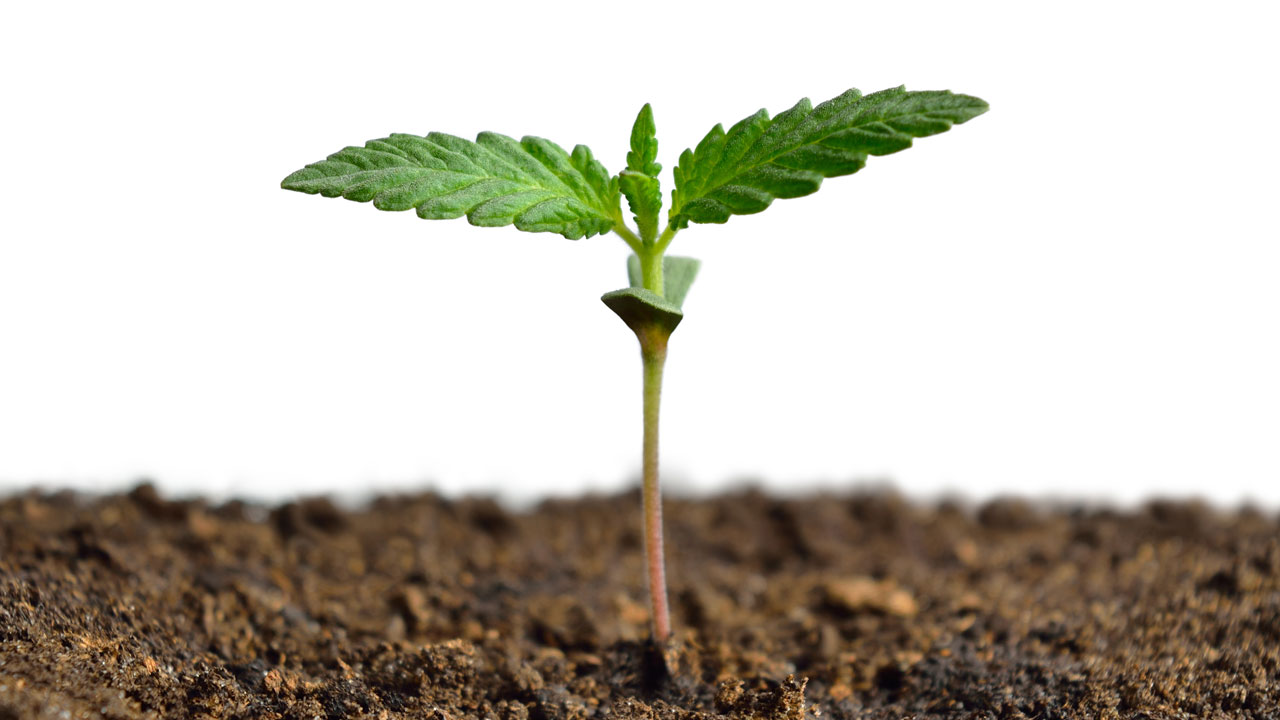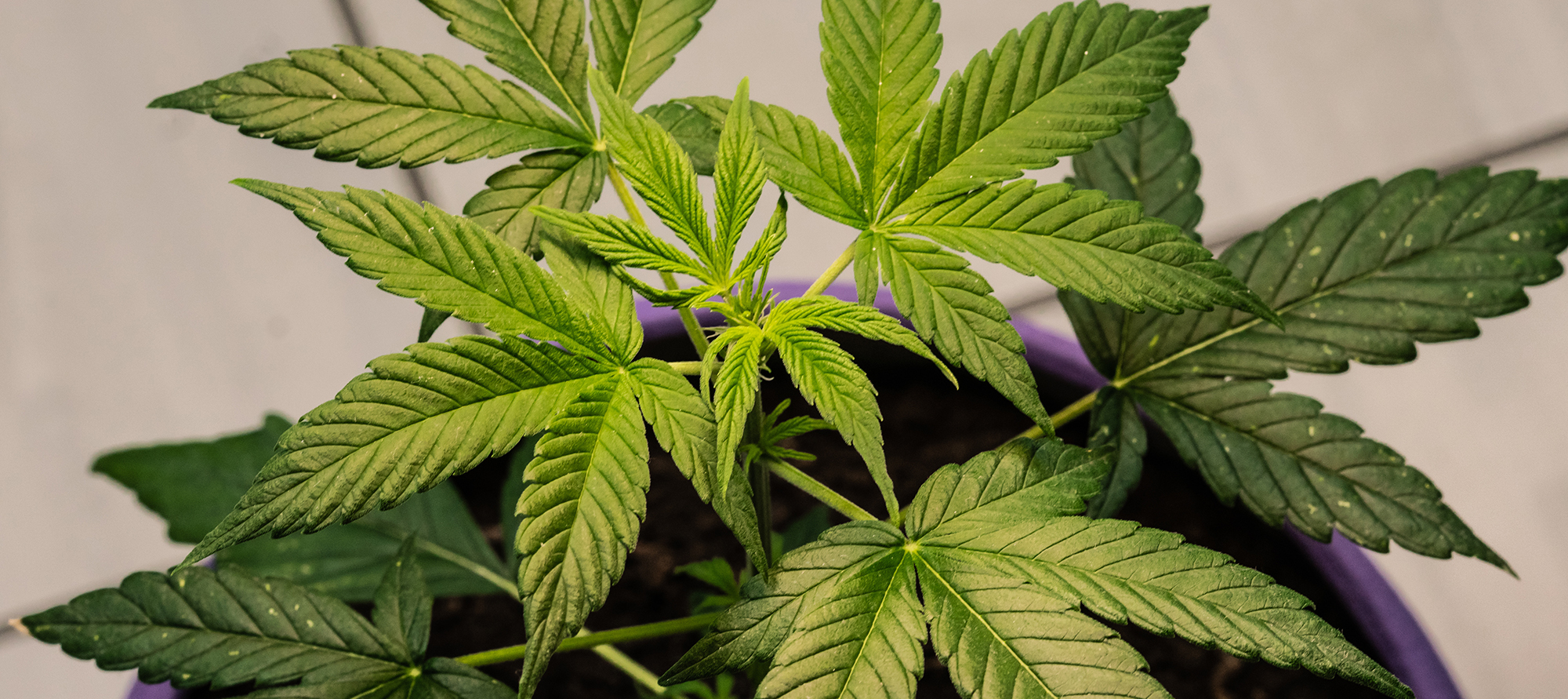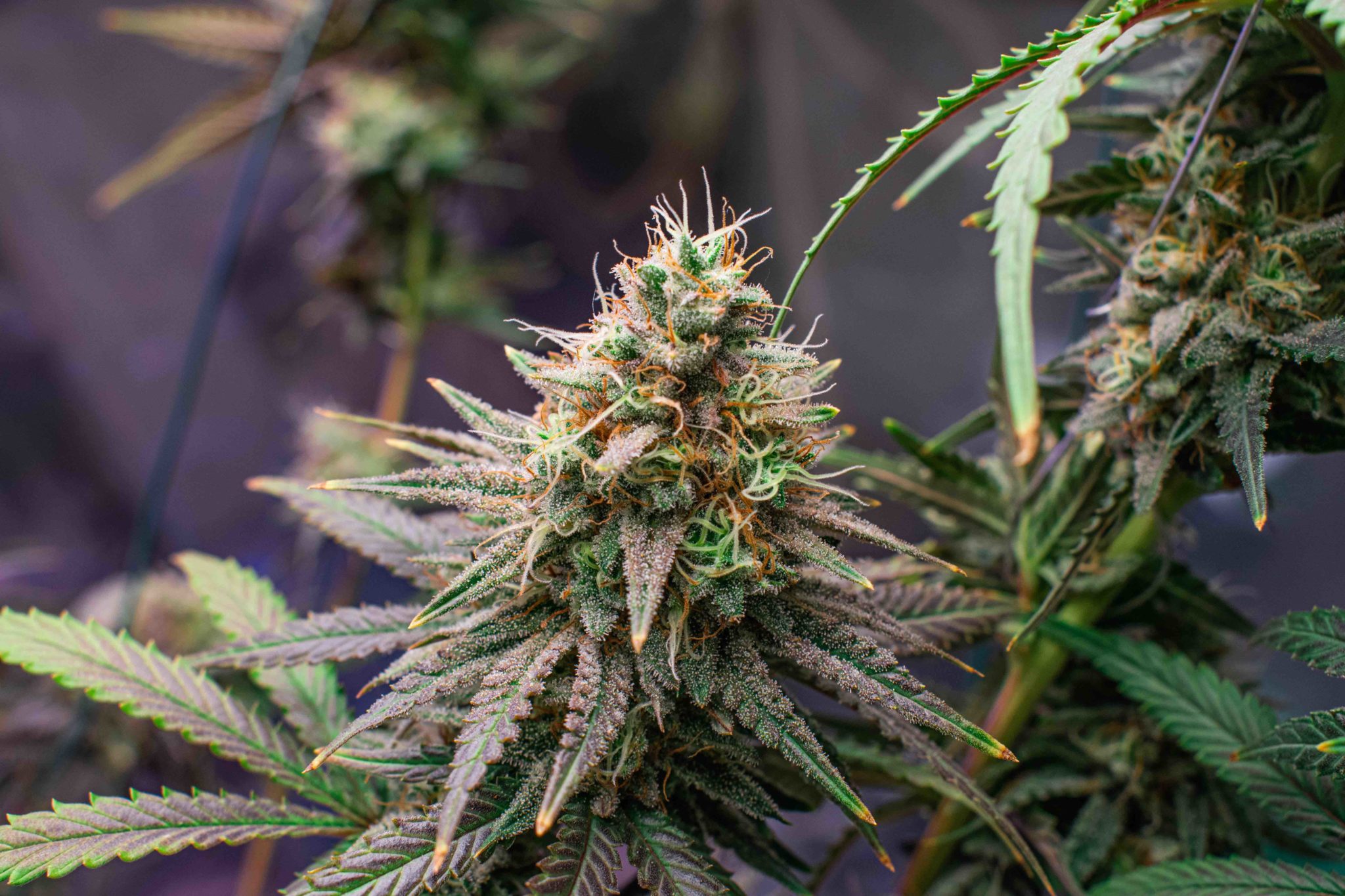Choosing Your Cannabis Seeds
When it comes to choosing cannabis seeds, the choices available can be overwhelming. Whether you choose a sativa, indica, ruderalis, or hybrid, there are countless options available. Knowing what you prefer from personal experience can help narrow down your choices.
Consider which strains have given you the best highs in the past or have acted as a suitable medicine for any particular ailment or condition you have. Thinking about these strains of cannabis seeds is a great starting point in finding your ideal selection.
Cannabis Fundamentals
To achieve optimal growth and produce the succulent buds that cannabis enthusiasts adore, the plant necessitates several essential elements. These fundamental factors ensure that the cannabis plant thrives and yields the highest quality product.
Light
Light is a crucial part of any marijuana growing process, as it is the source of energy for the plants to grow. Without proper lighting, a successful harvest will be difficult as it won't get the necessary resources to thrive.
For healthy vegetation marijuana needs over eighteen hours of light in 24 hours; this amount of light can be achieved indoors by using timers or outdoors with the right amount of direct sunlight each day. The amount and duration of light needed depends on whether the plant is grown indoors or out; when grown indoors, beginner growers control how much and when their plants are exposed to light with specific timers.
On the other hand, outdoor germination must be delayed until the plants can receive at least twelve hours per day of daylight and eight hours per day or more of direct sun exposure to create an environment where they can develop correctly. The variation in light and temperature gives great flexibility in planning growth cycles that give desirable results.
Growing Medium
Organic growers have come to rely on the soil as the most tried and true of mediums for supporting their plants and crops. However, there are other options available for those more inclined to try choices for growing their plants, instead of sticking to traditional soil.
These neutral mediums, such as coconut coir, perlite, vermiculite, or rock wool, do not provide any naturally-occurring nutrients for the plant yet can still act as a support structure for the plant’s roots. What makes these mediums even more appealing is that they are lightweight so they may be suitable in situations where heavier soils would cause problems.
Air
Indoor cannabis cultivation differs from outdoor growing in many ways, one of the biggest and most important being how it affects air quality. For healthy and strong growth, cannabis needs an adequate supply of carbon dioxide as well as fresh air to assist with the proper exchange of gases.
When grown outdoors, plants are exposed to various climate conditions, from breezes to gales. However, when cultivated indoors this process must actively be ensured by the cultivator by providing the healthy plants with fresh air intake and stale air exhaust.
A fan is also used for improved circulation of air which helps prevent any stagnant environments that could encourage pests or molds, as well as stunting plant growth due to excessive aspiration of gases.
Water
Water is an essential element for the cultivation of cannabis. For outdoor growers, water may come naturally in the form of rain, but larger plants need additional help to stay hydrated and healthy.
To supplement rainwater, cannabis growers will either use a drip irrigation system or manually water their plants. The advantage of using a drip irrigation system is that it allows you to control how much water each plant receives and works even when you are not present.
In indoor growing systems, unmodified water is regularly used as the medium that carries nutrients to the plants' roots. Without regular watering, your cannabis plants can become malnourished which can cause stunted growth and poor yields.
Every grower should be aware of how their specific systems work and understand their requirements for water and nutrient levels to give their plants the best chance at success. Ultimately, getting the right balance between hydration and nutrition is key in ensuring flowering crops reach maturity with great yields at harvest time.
More: How To Grow Weed With Reverse Osmosis Water.
Temperature
Cannabis is a tough and versatile plant that can survive a wide range of temperatures due to its hardy nature. It can survive freezing temps, as well as hot climates such as deserts, but like any other living thing, it has its limits. Excessive heat or cold can be very stressful for cannabis plants and ultimately lead to them going into stasis or stopping growth altogether.
As far as ideal temperatures go, twenty-seven degrees centigrade is considered optimum for vigorous growth in cannabis plants; however, given the right care and attention, they can still grow happily outside this range.
For outdoor growers, it's important to bear in mind that extreme temperatures can have a detrimental effect on crop yield and quality. Temperature fluctuations should be monitored carefully to make sure your plants stay within their optimal range.
In winter months for instance it may be necessary to provide additional warmth to ensure the wellness of your crops if temperatures fall too low for too long a period - either additional insulation over grow beds, growing tunnels or heating lamps can help maintain cannabis thrive even in the colder times of year.
Nutrients
Cannabis plants need nutrients to thrive just like any other organism. To provide them with the sustenance they need, the soil used must contain organic matter such as compost, vitamins, and minerals which help to feed your plants and promote healthy growth.
Supplementing this with natural waters like compost tea and other organic additives such as molasses or feather meal improves overall soil quality as well. Alternatively, a hydroponic system allows you to provide all of the necessary elements your plant needs through pre-formulated nutrient blends that have been specially formulated for marijuana.
These mixes take into account all the essential macro and micronutrients needed by cannabis to ensure optimal growth and development over its entire life cycle. Nutrient levels also need to be regulated depending on the growth phase of the plant to allow for proper photosynthesis, (adding more fertilizer during bloom) avoiding any issues related to deficiencies or an excess of minerals.
Humidity
Humidity is an important factor to consider when it comes to establishing and maintaining a healthy growing environment. Outdoors, the atmosphere presents its unique challenges as you are at the mercy of the local climate, with no way of controlling humidity levels.
However, these environmental variations can have the benefit of causing your plants to become more resilient due to their need to make biological adaptions -- this makes them stronger overall.
Indoors, humidity control is essential from seedling to flowering stages. Plants constantly absorb moisture from their surroundings, and having the correct balance of humidity in your grow space will help ensure that your plants remain pest-free and resist fungal diseases.
Whether you're using a wooden cupboard, grow tent, or even a dedicated grow room -- properly managing humidity levels will be necessary for optimal growth conditions. Monitoring regularly with a hygrometer is key as well!
Germination And Cannabis Seedlings
The initial step in cannabis growth is the germination process. Each viable seed contains all the genetic material needed to grow into a unique plant variety. The marijuana seeds won't germinate until they meet three key conditions: water, an adequate temperature, and a suitable location.
In the first few days of life, the seed quickly absorbs water, enabling the shell to open and split so that two cotyledon leaves pop out in search of light. This transition is called breaking dormancy and signals the beginning of the seedling stage for your cannabis plants.
Straight Into The Medium
When starting a garden, most people wonder what is the best way to go about sowing their marijuana seeds. The answer is quite simple: directly into the medium of your choice. This could be soil, compost, peat moss, or some other material that suits your needs. By avoiding the step where you need to transfer the seedlings to the soil or medium you’re growing them in, you can prevent any transplant shock.
Planting straight into the chosen medium is also much easier than germinating in one place and then having to transfer them later. Not only will this help reduce any risk of transplant shock, but it allows for better root growth and nutrient uptake which will benefit your plant as soon as it starts sprouting.
If you are planting directly into a bigger pot or out into the garden instead of in trays or small cannabis indoors first, make sure to prepare the soil properly with fertilizers and aeration for optimal results and reduce the chances of failing drastically.
Paper Towel
Paper towels are a great low-maintenance way to grow your mature plants from seed. All you need is a moistened paper towel, some weed seeds, and a plate. Simply lay the moistened paper towel on the plate, spread your cannabis seeds over it evenly, and cover with either plastic or an upturned plate to retain moisture and humidity.
As long as you retain these conditions the seed should begin to sprout in three to five days. The time can vary depending on the type of seed used but generally speaking, it should take up to a week for stems, leaves, or shoots to emerge above ground level.
In Water
Soaking seeds in enzyme-enriched water is a fast and easy way to give them the best chance of successful germination. This common method ensures that the seed is provided with all the necessary nutrition it needs for vigorous growth and development.
Once you can spot the tap root appearing, it's time to transfer the seed into your medium. With this effective method, the seedling should break through on top of the soil within a week or so, as long as it's kept under optimal conditions such as warmth and sufficient light.
Germination Stations
Germination stations are an incredibly helpful tool for anyone looking to get the most out of their crop. These machines offer an unparalleled level of control over climate and environment, which is especially important when it comes to germinating marijuana seeds.
Rather than using a traditional growing bed, the controlled conditions provided by a germination station allow you to ensure that your seeds receive optimum humidity and temperature to ensure the healthiest seedlings.
Germination times can also be greatly reduced when compared to non-station methods, making germination stations particularly advantageous for larger growers.
The Vegetative Phase Of Cannabis
The vegetative phase of cannabis is one of the most important stages during its growth and development. Once green leaves emerge and meet the light, photosynthesis kicks into full gear, allowing your plants to absorb nutrients and energy from the sun.
During this stage, your cannabis plants undergo a rapid growth period in which they expand their root systems, increase leaf production, and construct strong stalks and supporting stems. The vegetative growth can last anywhere from a few weeks to several months or even longer depending on the strain you’re growing.
During this period, it’s important to give your plants all the support they need by providing them with good lighting, soil nutrition, and a consistent environment with constant temperature. Additionally, advanced growers need to stay on top of their pruning duties and training during the vegetative stage to keep plants healthy and productive.
Lastly, trimming away unhealthy parts will help avoid potential issues while also ensuring that maximum yields are achieved later on in the flowering period. Proper care during this time is crucial for reaping strong results!
Indoors
Indoors, a controlled environment can be created with careful monitoring and careful decisions. Lights can be set to an eighteen-hour day, six-hour night light per day regimen which doesn't have to match daylight hours so that it's more suitable for the user.
Keeping electrical equipment running during off-peak hours can also help save money. Additionally, plants will stay happy when put in organic soil or receive nutrients designed for their vegetative phases. Fan-forced breezes are not only vital in keeping the temperatures under control, but they also strengthen young plants that need more support until maturity.
Exotic disciplines like adding carbon dioxide into the environment might also be used for better absorption of oxygen since CO2 is often consumed faster than replaced naturally in indoor environments. Altogether a consistent climate indoors means less stress on you as well as your plants and gives better growth opportunities.
More: The Ultimate Supercropping Cannabis Guide.
Outdoors
Cannabis grows most rapidly during the warmer months of spring and summer when there are extended daylight hours. Typically, when given enough space, genetics, and light, plants can grow up to one meter in height each month during this vegetative phase.
To keep it within a manageable size and prevent buds from growing too early on in the cycle, contemporary cannabis growers will continually ‘top’ or ‘de-starring’ the plants during their growth phase. This creates an even canopy filled with evenly sized buds that mature faster and give professional growers a higher yield on harvest day.
The Blooming Period Of Healthy Cannabis
The blooming period is one of the most exciting times in a cannabis grower's calendar. This important step marks the end of vegetation and the beginning of flowering when the plant's aroma and unique flower arrangements begin to develop. During this time, growers can watch with anticipation as their chosen strain transitions into beautiful flowering buds ready for harvest.
Outdoor growers will typically see signs of blooming when Summer heat has passed and autumn approaches whereas indoors you have complete control over this process by changing lighting schedules to a 12/12 hour photoperiod split between day and night. During this period, regular monitoring of temperature and humidity levels is especially important if you want to maximize your crop's yield with healthy flowers that are full of cannabinoids and terpenes.
Some effective strategies include creating an environment with consistent air exchange through ventilation, improving aeration over soil or hydroponic setups, and providing the nutrients necessary for stable growth throughout the blooming cycle. It takes patience and dedication, but together these actions will help produce premium quality flowers that you'll be excited to share with friends.
The Different Stages Of Blooming
During the blooming process, there is a very meaningful stage known as differentiation. At the start of this transformation, a noticeable change in the growth pattern occurs. Rather than the valiant striving of vegetation, there is more of a zig-zag and compressed shape that can be observed amongst the nodes.
This occurrence is especially significant because it marks the start of what will eventually become flowers. It also signals a period where other vital developments can begin.
Harvesting, Drying & Curing For Best Quality Buds
Discover the secrets to cultivating exceptional cannabis with our comprehensive guide on harvesting, drying, and curing for top-quality buds. Learn the crucial basic steps and expert techniques that will elevate your cannabis experience by preserving potency, enhancing flavor, and ensuring the smoothest smoke possible.
Harvesting The Marijuana Plant
Harvesting marijuana plants requires precision, patience, and attention. It is important to know the right time to harvest your plants to get the optimal results. The time of harvest depends on several factors, such as strain type, desired effect, and plant maturity.
The most reliable way to determine when to harvest is by observing the trichome heads. It is generally agreed upon that when 50-75% of the trichomes turn an opaque/cloudy white color, it is an ideal time for harvesting.
There are a variety of ways to harvest your marijuana plants. Wet trimming involves removing all the leaves while keeping the plant standing before breaking down the buds further for drying or curing.
Drying And Curing Cannabis
Drying and curing cannabis is an important part of the process for attaining high-quality marijuana buds. It plays a major role in preserving terpene profiles, which are responsible for much of the flavor, aroma, and effects of weed.
Before harvesting, growers should allow their plants to dry for about three days by hanging them upside down in a dark and cool place with little humidity. This slow-drying process allows moisture to escape gradually throughout each bud. Once the drying process is finished, it’s time to move on to the curing stage.
Curing generally takes between two and four weeks depending on the strain type and quality desired but it should take at least two weeks to produce good results. During this process, buds are placed into glass jars or other containers that allow some air circulation but not enough to dry out the flowers.
The jars are then checked every couple of days to monitor humidity levels – the ideal range being 62-65%. If the levels get too low, some water can be added to help bring them back up. Once cured properly, buds will have more layered flavors with improved potency when smoked or vaporized.
Storing Cured Buds
Storing cured buds is essential for preserving flavor, smell, and potency. Fortunately, it’s very easy to do if you follow the steps correctly. Begin by loosely packing a well-sealed glass jar with your buds. Open the lid of the jar once a day for the first two weeks to “burp” out any built-up humidity that could cause mold.
After these two weeks, make sure that your buds are dry to the touch before only burping once a week. This is important to ensure that all your hard work in curing doesn’t go down the drain due to lack of attention.
Additionally, sampling the buds as they dry helps you keep track of how they turn out and can be used as a reference point in future curing endeavors. By following these simple steps, you can ensure that your finished product has good flavor and aroma when stored correctly!


 Français
Français 


